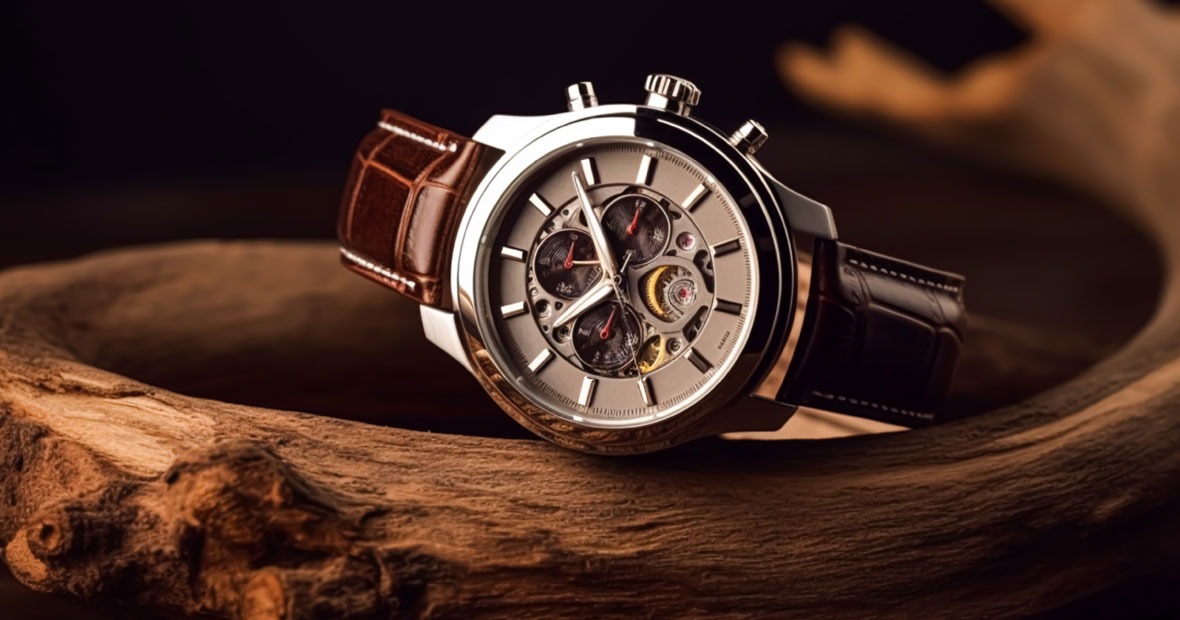
Delving into the realm of vintage watches illuminates the intricate bridge between horology's illustrious past and its innovative present. This journey unveils the masterful craftsmanship behind each dial and balance, spotlighting iconic brands ranging from Rolex to Patek Philippe. As one navigates through the intricacies of watch movements, a newfound understanding of their role in watchmaking emerges, revealing the unique characteristics of movements found in vintage pieces. With each ticking second, these timeless works of art captivate collectors, offering a unique allure only vintage timepieces possess.
Watchmaking Craftsmanship: From Dial to Balance
The meticulous work of watchmaking is a craft steeped in rich history and tradition. An understanding of the intricate design and function of each component, from dial to balance, provides a unique appreciation for the art of horology.
The dial serves as the face of the watch, elegantly displaying time. Each hand, finely crafted by the watchmaker, moves in harmony with the underlying movement. These parts, often unseen, are the heart of the watch. The balance wheel, a critical component, oscillates back and forth, regulating the timekeeping function. Comprehending these technical terms and their role in the overall function of the watch enhances the appreciation of the craft.
Delving into the world of vintage watches, one appreciates the bridge they form between past and present, offering a tangible connection to the history of watchmaking. Selecting a quality vintage watch involves understanding the history, maker, condition, and rarity of the piece. There are clear guidelines to follow for an informed choice.
For more information, consider educational resources that simplify the process of watchmaking, demonstrating the importance of balance, and providing detailed insights into the components of a watch. These resources serve as a clear, easy-to-use reference for understanding the technical language of watchmaking.
Iconic Watch Brands: From Rolex to Patek Philippe
Tracing the path through horology's illustrious past, one cannot overlook the role played by iconic watch brands like Rolex and Patek Philippe. These brands, one Swiss and one English, have carved their indelible mark on the watch industry worldwide. Their journey, steeped in a rich history, is a testament to their resilience, innovation, and timeless appeal.
From the heart of Geneva, Patek Philippe emerged in 1839, upholding the tradition of Swiss precision. Over the years, the brand has confronted challenges, yet managed to retain its esteemed position within the horological industry. Rolex, on the other hand, commenced its journey in London in 1905, gradually becoming synonymous with luxury and classic style.
The value of vintage watches from these brands is influenced by various factors. Rarity, condition, and provenance all play a part in determining a timepiece's worth. Preserving these watches involves meticulous care to maintain their originality and functionality.
Appreciating the Intricacies of Watch Movements
Entering the world of vintage watches uncovers a bridge between past and present horology, where the adoration for the complexity of watch movements reigns supreme. Unraveling the mysteries behind the ongoing operation of these timeless pieces provides a unique perspective into the realm of watchmaking.
Understanding the Role of Movements in Watchmaking
At the heart of every watch, lies the movement. This intricate system, crafted with precision by skilled watchmakers, is responsible for the timekeeping accuracy and the functionalities of the watch. The movement, often considered as the powerhouse, is particularly revered in vintage pieces where manual craftsmanship was at its peak.
Common Types of Watch Movements in Vintage Pieces
There are numerous types of movements, each with its unique construction and operation. The most common are the mechanical, automatic and quartz movements. Mechanical movements, often found in vintage pieces, require manual winding to create the energy required for timekeeping. These movements showcase the high technical skills of watchmakers, featuring components such as the tourbillon and escapement, meticulously designed to counteract the effects of gravity and improve accuracy.
Technical Aspects of Watch Movements
The production of watch movements is a complex process that requires meticulous attention to detail. Movement components such as the balance wheel, oscillating at a constant rate, and the escapement, transferring energy to the timekeeping element, contribute to the precision of the watch. These elements illustrate the technical prowess of watchmakers, particularly in the creation of vintage pieces.
Developing a comprehensive understanding of watch movements, assessing their quality, familiarizing oneself with horological terminology, appreciating the historical evolution of movements, and learning the proper care and maintenance tips for watch movements are all essential aspects for any vintage watch enthusiast.
Collecting Timeless Art: The Allure of Vintage Timepieces
Unearthing the charm of vintage timepieces requires a profound appreciation for the intricate beauty of horology. Vintage watches are more than just time-telling devices; they become repositories of stories spanning centuries. Timepiece collectors find immense joy in the hunt for these remarkable pieces, each bearing an echo of a bygone era, meticulously crafted by skilled artisans of yore.
Uniquely, the allure of these vintage watches lies not merely in the gold or precious jewels they might bear, but in the intricate mechanisms that tick minute by minute, year after year, often outlasting their original owners. Every tiny gear and spring, every carefully engraved detail, speaks to the extraordinary craftsmanship of times past. These are not new, mass-produced items. They are works of art, each one unique, each one a testament to the skills and patience of the watchmaker.
